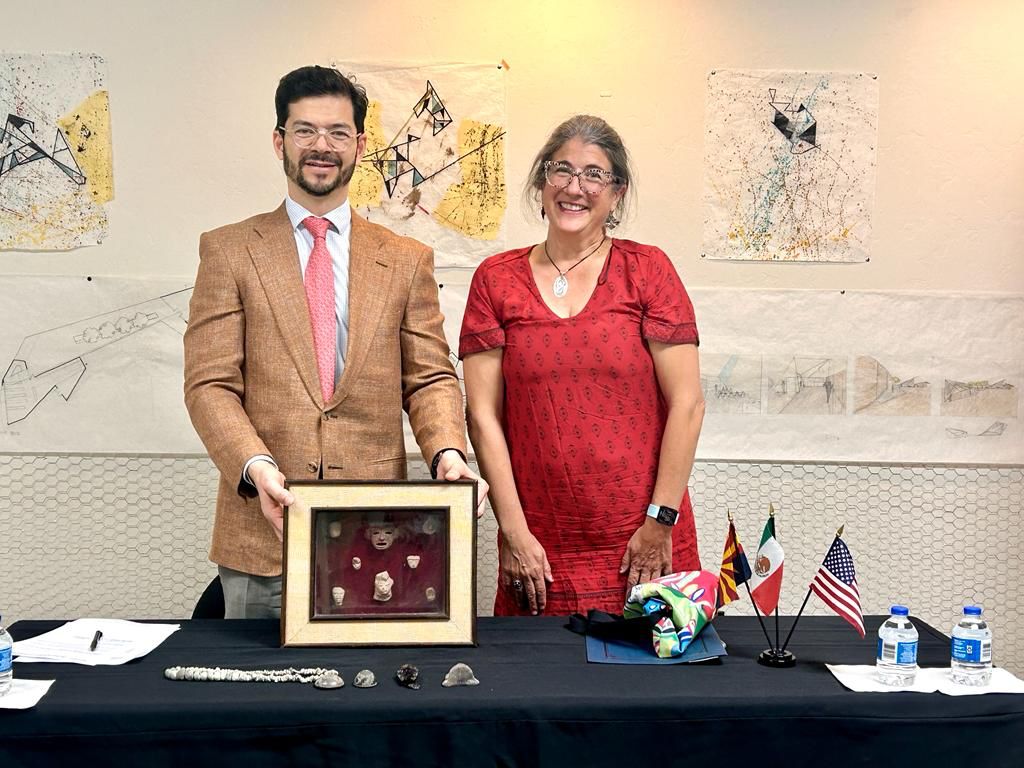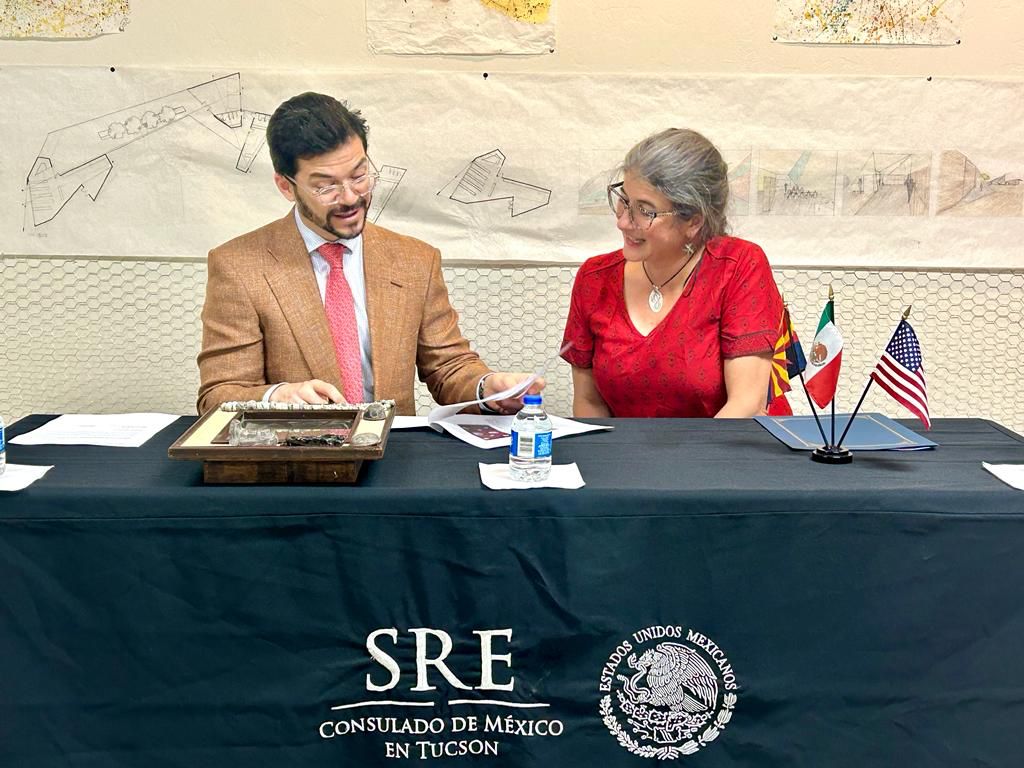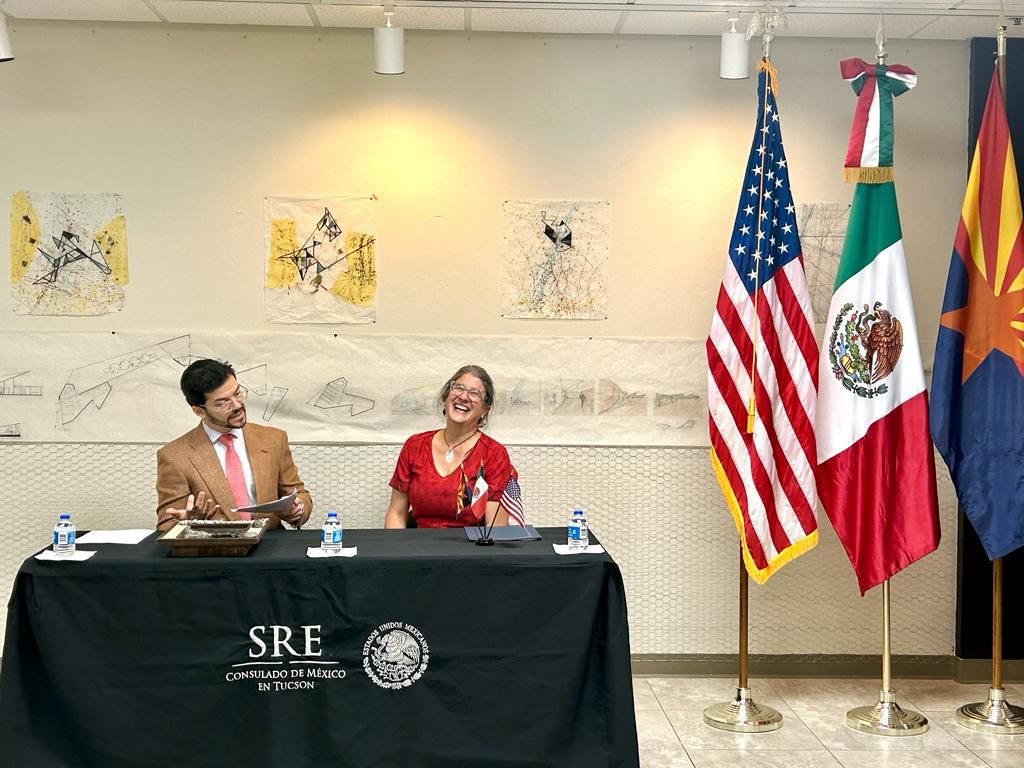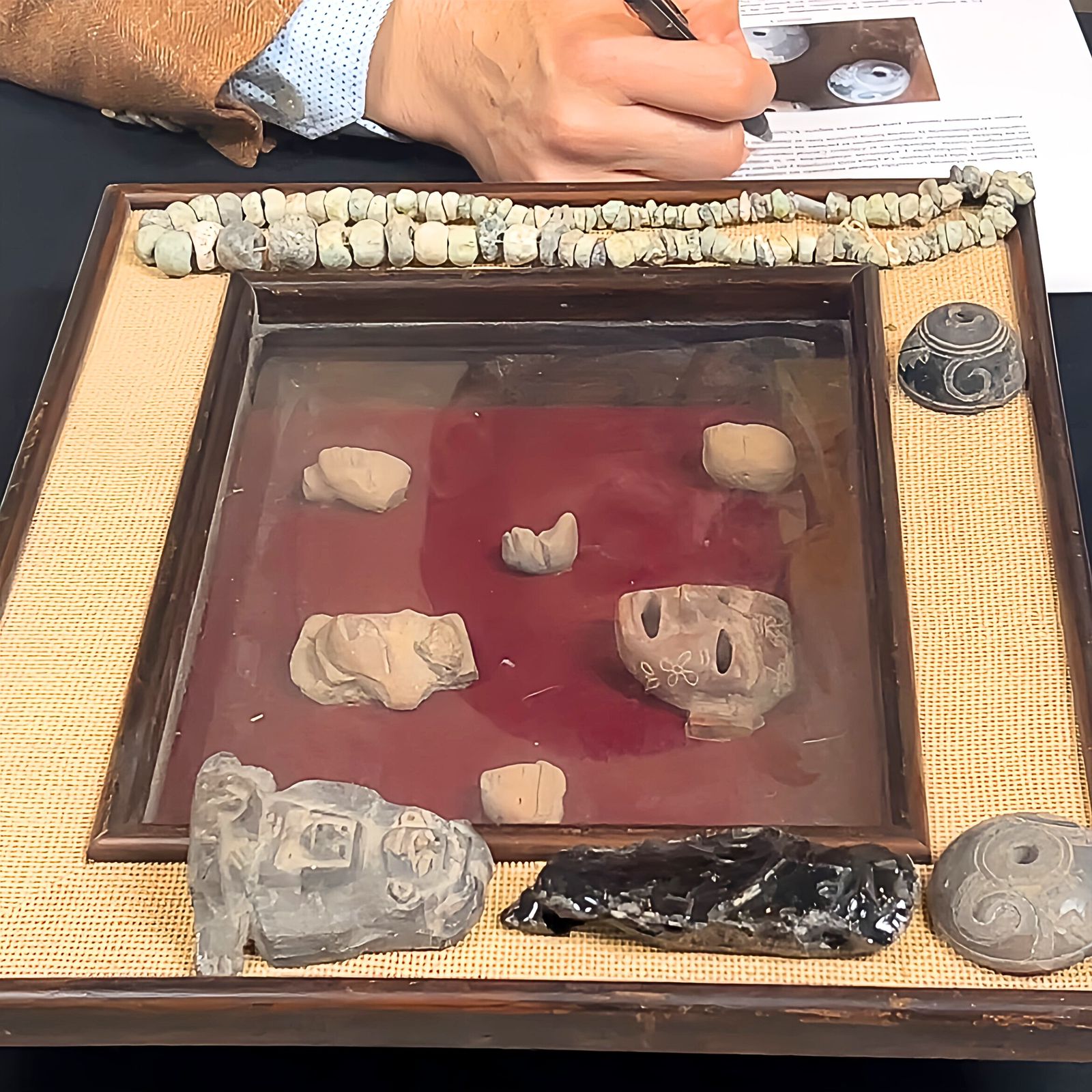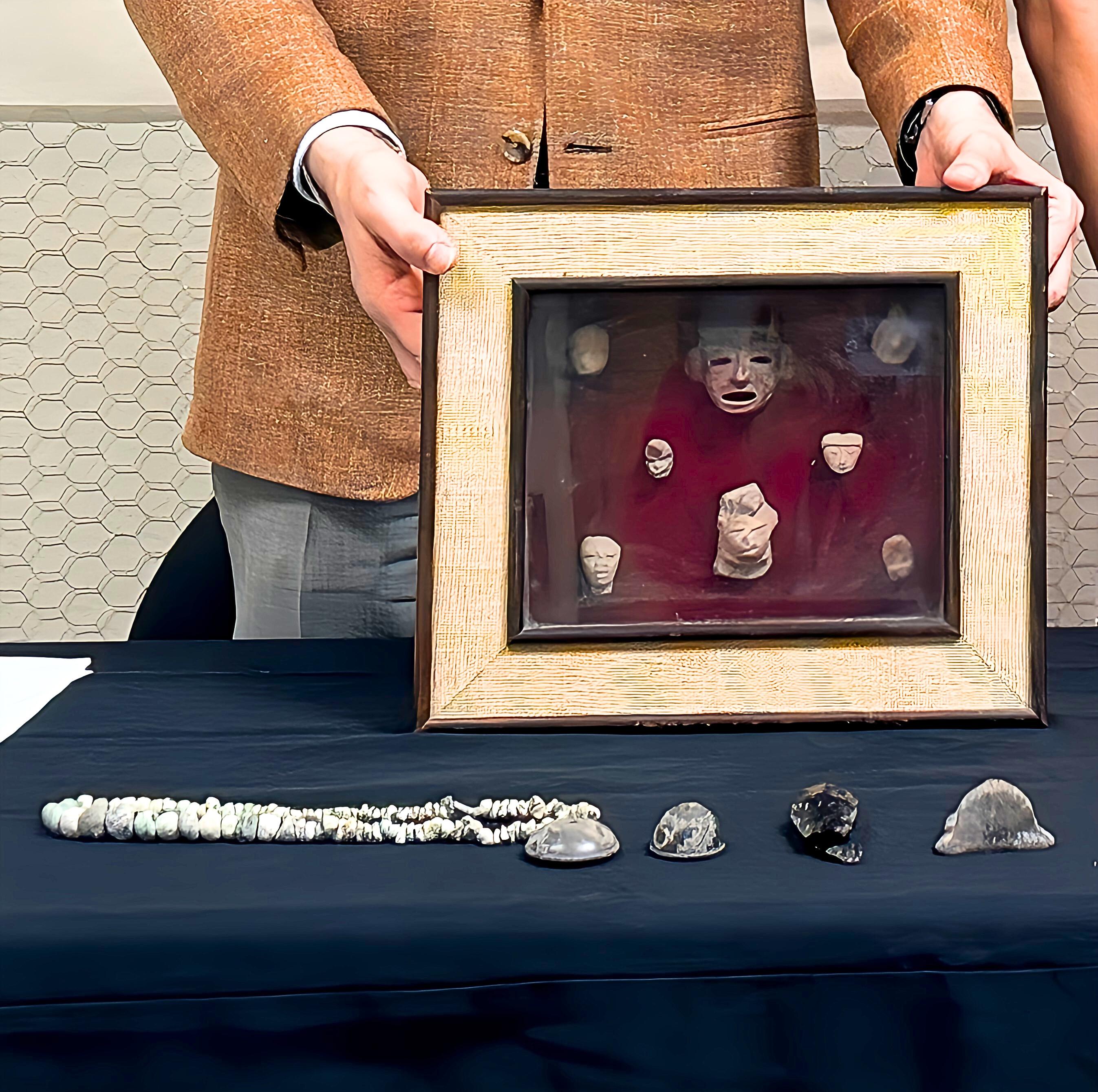- The artifacts were returned to the Consulate General of Mexico in Tucson, Arizona.
- INAH determined that they date from the Mesoamerican Classic (200-750 A.D.) and Postclassic (1200 A.D.-1521 A.D.) periods.
The Consulate General of Mexico in Tucson, Arizona reports that 13 archaeological pieces have been voluntarily returned by a U.S. citizen.
According to experts from the National Institute of Anthropology and History (INAH), the artifacts correspond to cultures of the Central Highlands, and date from the Mesoamerican Classic (200-750 A.D.) and Postclassic (1200 A.D.-1521 A.D.) periods.
Highlights of the collection include Teotihuacan-style pieces such as a miniature mask and fragments of anthropomorphic figurines; a Mexica-style figurine representing a female wearing a headdress, earplugs and quechquemitl (a garment formed by two joined rectangles), and holding an infant on her lap; a necklace of spherical and disc-shaped beads, made of greenish-colored metamorphic rock; a bifacial knife and a pair of spindle whorls.
The objects, which are movable archaeological monuments belonging to the Mexican people, were delivered by U.S. citizen Julie Qashu to the consulate for their safekeeping to ensure that Mexico’s cultural heritage is preserved and promoted. The Foreign Ministry will send the artifacts to Mexico City by diplomatic pouch to ensure that they return safely to Mexico.
The voluntary return of these artifacts is evidence of an important change with respect to the possession of archaeological and historical pieces that are part of private collections. It shows respect for our cultural heritage and the close relationship between both nations.
The restitution of these pieces is a demonstration of how Mexico and various countries are cooperating to protect cultural heritage; international best practices for the conservation of the historical past of nations, and the commitment of individuals to return this heritage to their places of origin.
Private collectors abroad who currently have Mexican pieces in their possession are invited to join in protecting and safeguarding them by returning them to Mexico for their study, conservation and display, as they are objects that bear witness to the identity and memory of Mexico's native peoples.
